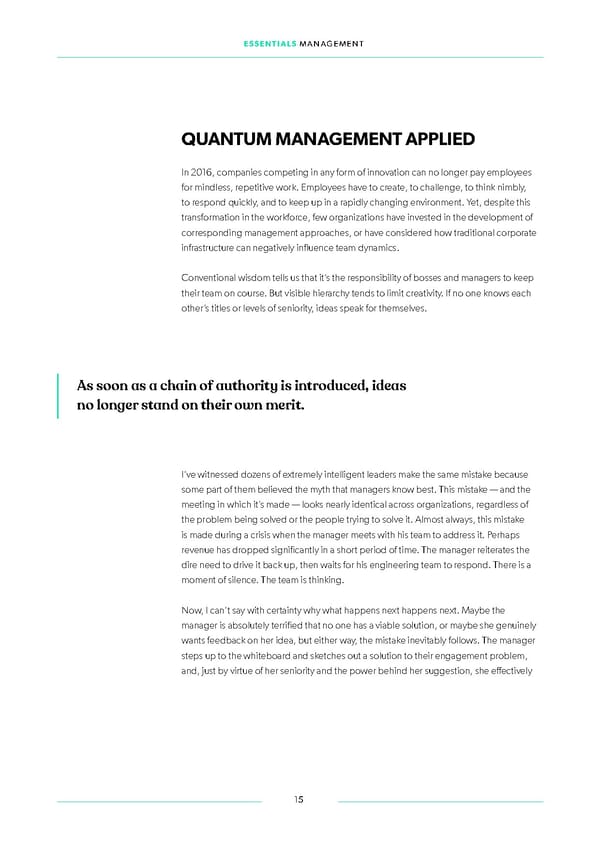ESSENTIALS MANAGEMENT QUANTUM MANAGEMENT APPLIED In 2016, companies competing in any form of innovation can no longer pay employees for mindless, repetitive work. Employees have to create, to challenge, to think nimbly, to respond quickly, and to keep up in a rapidly changing environment. Yet, despite this transformation in the workforce, few organizations have invested in the development of corresponding management approaches, or have considered how traditional corporate infrastructure can negatively inlfuence team dynamics. Conventional wisdom tells us that it’s the responsibility of bosses and managers to keep their team on course. But visible hierarchy tends to limit creativity. If no one knows each other’s titles or levels of seniority, ideas speak for themselves. As soon as a chain of authority is introduced, ideas no longer stand on their own merit. I’ve witnessed dozens of extremely intelligent leaders make the same mistake because some part of them believed the myth that managers know best. This mistake — and the meeting in which it’s made — looks nearly identical across organizations, regardless of the problem being solved or the people trying to solve it. Almost always, this mistake is made during a crisis when the manager meets with his team to address it. Perhaps revenue has dropped signiifcantly in a short period of time. The manager reiterates the dire need to drive it back up, then waits for his engineering team to respond. There is a moment of silence. The team is thinking. Now, I can’t say with certainty why what happens next happens next. Maybe the manager is absolutely terriifed that no one has a viable solution, or maybe she genuinely wants feedback on her idea, but either way, the mistake inevitably follows. The manager steps up to the whiteboard and sketches out a solution to their engagement problem, and, just by virtue of her seniority and the power behind her suggestion, she effectively 15
 Essentials Management First Round Capital Page 14 Page 16
Essentials Management First Round Capital Page 14 Page 16